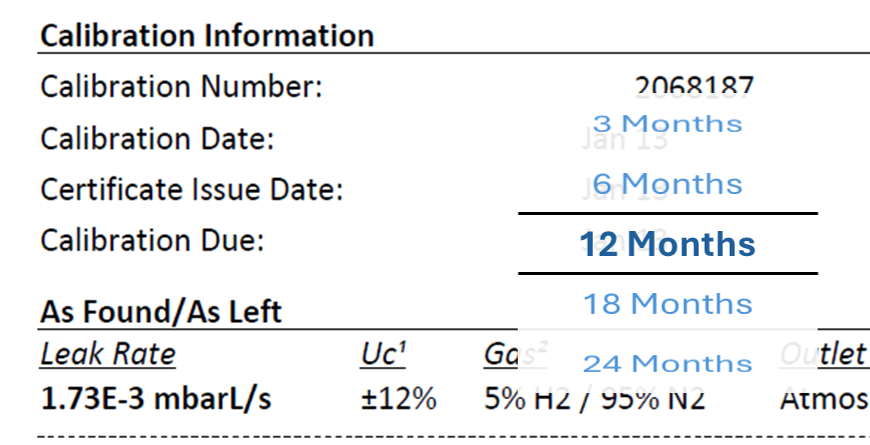How often does my leak need to be calibrated?
How often a leak needs to be calibrated is also known as the calibration frequency or calibration interval. The calibration interval is determined based on several factors related to the leak itself and the application in which it is being used.
Depletion Rate
The depletion rate refers to how much the pressure and/or leak rate change over time for a leak. Depletion rate is only applicable to leaks with a reservoir supplying the gas. If the leak rate drops below what is usable for your application, you will need to refill it. If your leak is not user refillable, you will need to send it in for refill and calibration. Depletion rate is often a contributing factor in leaks with a higher leak rate and/or smaller reservoir.
Application
Leaks which are being used to control or monitor a process are generally calibrated more frequently. Since any failure in
the leak will affect the ability of the user to control or monitor their process, the increased monetary and time cost of having the leak calibrated more frequently is justified.
Implications of Failure
The implications of a leak failing to perform as expected are often weighed against the monetary and time cost of recalibrating the leak. The cost of loss of life for safety and medical device production or the cost of poor quality (dissatisfied customers, recalls, etc.) for many production processes will often justify more frequent calibration.
The most common calibration interval we see is annually. If you don’t know what interval to use, annually might be a good place to start.
Are you ready to calibrate your leak standard? Request a quote today!

